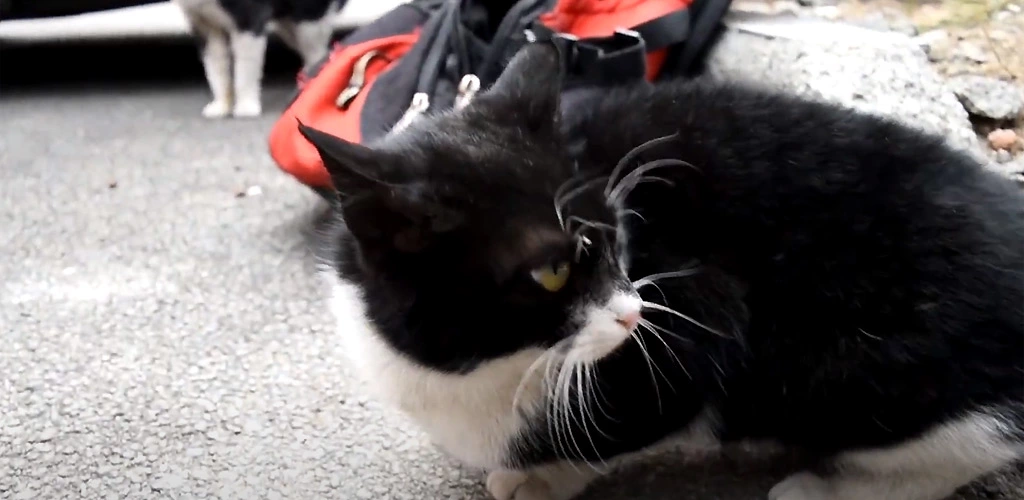You probably love to pet your cat and as you do so, you might start scratching different parts of his body and face. Now, you might be wondering if your cat feels a ticklish sensation every time you pet him. Are cats ticklish, then?
Table of Contents
Where are cats ticklish spots?
Yes, cats could be ticklish. The ticklish spots of cats include the paws, cheeks, bellies, and chins. All cats have their own ticklish spots. Although a cat cannot laugh, these animals also exhibit some behaviors and movements when you tickle them.

There is still no term that refers to cats being ticklish. But, there is no denying that there are spots that cats may love being scratched. Read on below to know more about the spots that cats may like to be tickled on.
Are cats ticklish on their paws?
The paws of felines are extremely sensitive meant this way for survival purposes, particularly with outdoor or wild cats. The paws of cats can sense vibrations in the ground that can alert them if someone or something is getting near. Naturally quick on their paws, cats can sense if there is a need for them to hide or run.
Due to the sensitivity of their paws, cats may be tickled even with the softest or lightest touch there. Tickling their paws, particularly under the pads, will make them bat and hiss at you to stop or they may also want you to continue petting their paws because they like the attention.
Are cats ticklish on their belly?
If your belly area is ticklish, you wouldn’t want others to tickle you there. You won’t laugh and instead, you may try to get away or worse, hit the person tickling you.
Cats are just like you. A cat’s belly has extreme sensitivity to touch and cats might try clawing at you or even biting you if you give it a try. This is why it can be a serious chore to groom the belly of long-haired cats, depending on the cat’s size.
Are cats ticklish on their feet?
It can be risky to tickle cats on their feet since their paws are designed to be sensitive. Those exposed pads on the paws of your cat have different functions such as sensing vibrations on the ground, releasing sweat, insulating heat and absorbing shock from falling.
This is the reason why cats tend to be protective of their feet. While you might find the pink pads irresistible to touch when your pet is sleeping, it is best to just leave them alone. It means that your cat trusts you enough if he leaves his paw pads out in the open. This is his way of announcing that he feels safe being around you.
You will end up violating this trust if your tickle your cat’s feet. He will likely hide his paws or more to another sleeping location that is more secluded.
Of course, all rules have exceptions. There are cats that love having their feet tickled. However, this is very rare. If possible, it is best not to touch much less tickle your cat’s feet.
Are cats ticklish tail?
Depending on the specific cats, their tails might be moving all the time, swaying back and forth as if he is waving at you with his tail. Only when he is sleeping that his tail may stay still.
As such, there are cats that do enjoy it when their tails are stroked or tickled. They may purr and lie still because you touching him mean that he is loved. There are also cats that might stand up and get away because touching their tails may create sensations they don’t really like.
Are cats bellies ticklish?
There are cats that like it when you tickle and touch your bellies while others might not be fond of the action.
The belly of a cat is one of those body parts that you may need to risk touching for you to know if they actually like it.
A cat may be ticklish on his belly but it is all up to you to muster the courage of touching or seeing it yourself, or getting scratched if you are unlucky.
Are Cats Ears Ticklish?
One of the most popular and common spots for petting cats is the base of their ears. One probable reason for this is the fact that this is the location of most scent glands.
Many felines love getting their ears rubbed and petted but it is important that you take extra care and be gentle as you do so. Focus on the bottom part of the ears because this is the spot containing scent glands. The glands are responsible for releasing pheromones used for marking their territory. Your kitty may feel more at ease and relaxed if you pet this specific body part.
Are all cats ticklish?
There are cats that are ticklish while others are not. If you got several cats, you surely know that each and every cat has a unique and different personality. This means that not all cats like similar things and the same rule is applicable for tickling.
A certain cat may love anything and everything you do to them but others might simply hate it outright and hiss or hide. The best way for you to be sure is to try to see their reaction. Sadly, you can never ask them whether they like it or not.
In case your cat doesn’t really like being tickled, it is best not to do it. Your cat may get annoyed an avoid you if you always do things he doesn’t like.
Why are cats ticklish on their backs?
The back of your cat is no doubt the most variable spot for tickling. There are cats that simply love this kind of experience while others may hate it. You will be able to know what your pet feels. If your cat doesn’t like to be tickled, he will surely bat away from your hand.
It is often safer to use a hairbrush to test the area first. Lightly pet your cat around his head to settle him. Run the brush down his back once he is relaxed. This skin is similar to knismesis. If the feline hates it, his displeasure will be directed to the hairbrush.
There is also the risk that your cat can mistake the tickling for having parasites. If your pet recently had some flea problems, he may assume that the pests are back if you tickle and he will scratch to react to this.
We also strongly recommend you to read:



